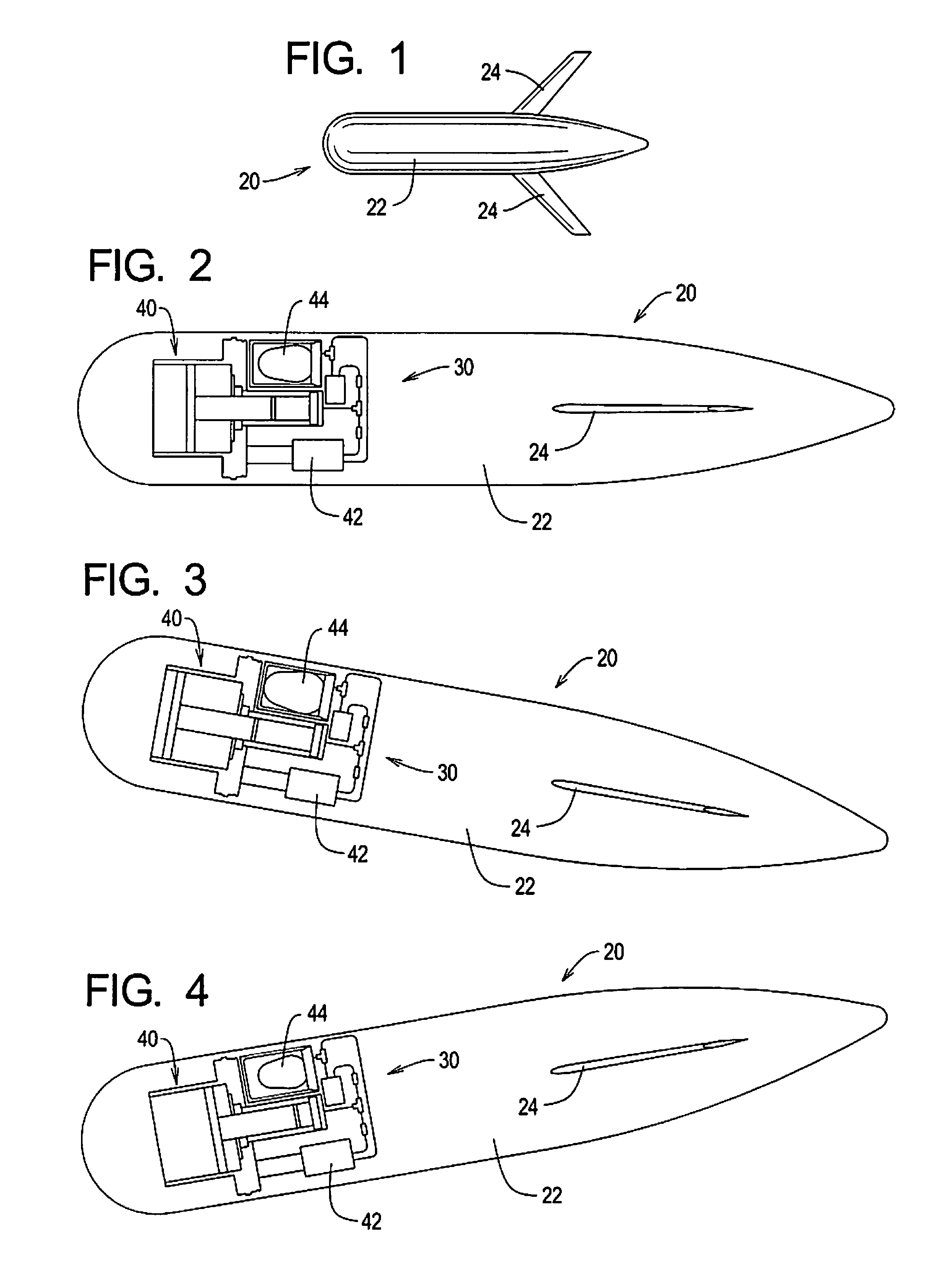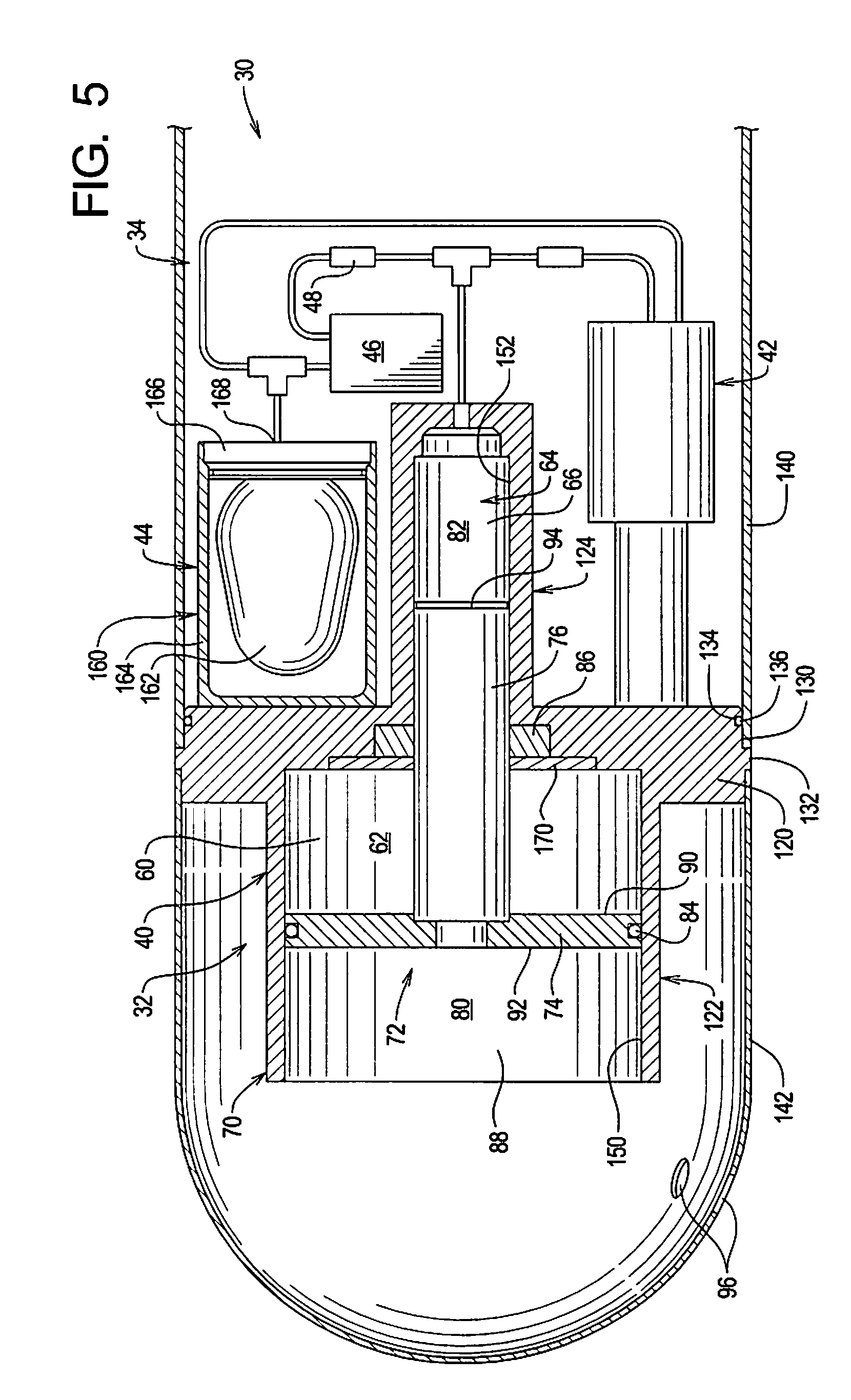Buoyancy control systems and methods for submersible objects
- Summary
- Abstract
- Description
- Claims
- Application Information
AI Technical Summary
Benefits of technology
Problems solved by technology
Method used
Image
Examples
Embodiment Construction
[0032]Referring initially to FIG. 1 of the drawing, depicted therein is an example waterborne vessel in the form of a glider 20. The example glider 20 is generally conventional in that it comprises a hull assembly 22 and one or more fins and / or wings 24. FIGS. 2-3 illustrate that the example glider 20 further comprises a buoyancy control system 30 arranged within the hull assembly 22.
[0033]The buoyancy control system 30 is depicted in further detail in FIGS. 5-7 of the drawing. In particular, FIG. 5 illustrates details of a mechanical portion 32 of the buoyancy control system 30, while FIG. 6 schematically illustrates both the mechanical portion 32 and a control portion 34 of the buoyancy control system 30.
[0034]Referring initially to FIG. 6 of the drawing, it can be seen that the example mechanical portion 32 comprises a piston assembly 40, a pump assembly 42, an accumulator assembly 44, a valve assembly 46, and a filter 48. FIG. 6 further shows that the example control portion 34 ...
PUM
 Login to view more
Login to view more Abstract
Description
Claims
Application Information
 Login to view more
Login to view more - R&D Engineer
- R&D Manager
- IP Professional
- Industry Leading Data Capabilities
- Powerful AI technology
- Patent DNA Extraction
Browse by: Latest US Patents, China's latest patents, Technical Efficacy Thesaurus, Application Domain, Technology Topic.
© 2024 PatSnap. All rights reserved.Legal|Privacy policy|Modern Slavery Act Transparency Statement|Sitemap



